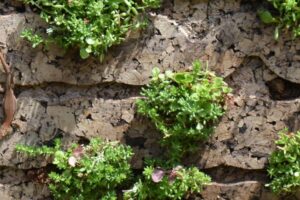
Recap of the conference Advanced materials for construction
May 11, 2022
CIT UPC co-organizes the conference Door-to-door mobility
May 17, 2022
Recap of the conference Advanced materials for construction
May 11, 2022
CIT UPC co-organizes the conference Door-to-door mobility
May 17, 2022On Tuesday 26 April, the conference Advanced materials for construction took place. This conference was organised by the Technology Center of the Universitat Politècnica de Catalunya, along with CIM UPC at the Terrassa School of Industrial, Aerospace and Audiovisual Engineering (ESEIAAT UPC).
Over 30 participants from the construction sector attended a conference that included five presentations, a round table, a visit to additive manufacturing facilities and laboratories of ESEIAAT UPC and a final networking aperitif.
UPC technology, key to transformation in the sector
“The construction sector needs to enter the twenty-first century, both technologically and socially.” Xavier Roca, director of the Terrassa School of Industrial, Aerospace and Audiovisual Engineering opened the conference with this statement.
The sector is evolving towards new building technologies and new materials, to meet regulatory directives and to increase competitiveness in the market. To address the challenges of transformation that are faced, a commitment must be made to sustainable solutions. All parties involved must be able to overcome the deeply rooted conventionalism of the sector.
The presentations by UPC researchers showed how alternative pathways exist and that they have been validated in terms of efficacy and security.
Taking the path towards sustainability and industrialisation
During her presentation Analysis of the applicability of concrete and mixed recycled aggregates in the manufacture of durable concrete, Miren Etxeberria from the research group Analysis and Technology of Structures and Materials (ATEM UPC) showed the feasibility of using recycled aggregates (a component of concrete), construction and demolition waste from existing works to produce new, very high quality concretes. “Thirty per cent of the waste that is generated in the European Union comes from construction. The key for the transformation of the sector is industrialisation, especially digital, and the use of recycled resources. Sustainability involves universalising the use of recycled elements to generate new raw material.”
Louison Poudelet, from CIM UPC, added that, to reduce the global impact of this sector, the future of construction should consider additive manufacturing technologies or 3D printing. With these, the sector would save energy, resources and material costs and contribute in a real, positive way to the environment and energy efficiency. To disseminate its use, he stated, it is important to respond to considerable technological challenges, and to ensure the standards of mechanical resistance in structural applications and standards of uniformity in the material composition.
Finally, through the presentation by Lluís Gil, from the Centre for Advanced Technologies in Mechanics (CATMech UPC), positive results in the use of natural fibres and waste were presented to give new properties to structural cements, meeting specific needs of elasticity, deformation and acoustic insulation.
After the first part of the presentations, a round table was held in which different perspectives were brought together from the areas of research, design, architecture and construction through the participation of companies VIAS, Escofet and Lagula Arquitectes, and the Construction Engineering group of the Universitat Politècnica de Catalunya.
The key aspect of the debate, chaired by Roger Uceda, director of the technology transfer area of CIM UPC, was the need to industrialise construction, digitalise it and increase quality standards. At the same time, a commitment must be made to new more sustainable, safer materials.
Networking for future collaborations
At the end of the day, attendees could visit the additive manufacturing laboratories and facilities of ESEIAAT UPC, a tour that ended with a networking aperitif.
Related Projects
- The BIOsignal Analysis for Rehabilitation and Therapy (BIOART) research group at the Universitat Politècnica de Catalunya – BarcelonaTech (UPC) coordinates the Proactive Response and Efficient Planning with AI for Resilient Emergencies in hospitals (PREPARE) project, which aims to optimise hospital preparedness during emergencies through dynamic capacity and risk assessment using artificial intelligence (AI).
- A research team from the inLab FIB at the Universitat Politècnica de Catalunya - BarcelonaTech (UPC), together with the Asociación de Personas con Movilidad Reducida (AsoPMR), has taken part in the Spot4Dis project to enhance the mobility and autonomy of people with reduced mobility.
- The La Volta project foresees the construction of a large Catalan vault pergola within the Llars Mundet campus, in the Montbau neighbourhood (Horta-Guinardó district). This structure will become a new architectural landmark for Barcelona, combining traditional construction techniques with contemporary innovation. The project involves the Rehabilitation and Architectural Restoration Research Group (REARQ), at the Universitat Politècnica de Catalunya - BarcelonaTech (UPC), and is led by the Architects’ Association of Catalonia (COAC) and the Barcelona Provincial Council.
SATE-VEG: A system for energy renovation of buildings that helps reduce the urban heat island effect
Researchers from the Architecture, Energy and Environment (AiEM) group at the Universitat Politècnica de Catalunya - BarcelonaTech (UPC) have developed SATE-VEG, an external thermal insulation system with a vegetal coating that offers seasonally adaptive thermal behaviour, enhances urban biodiversity and promotes positive health effects. The system is made from organic materials, requires low maintenance and consumes minimal water.












